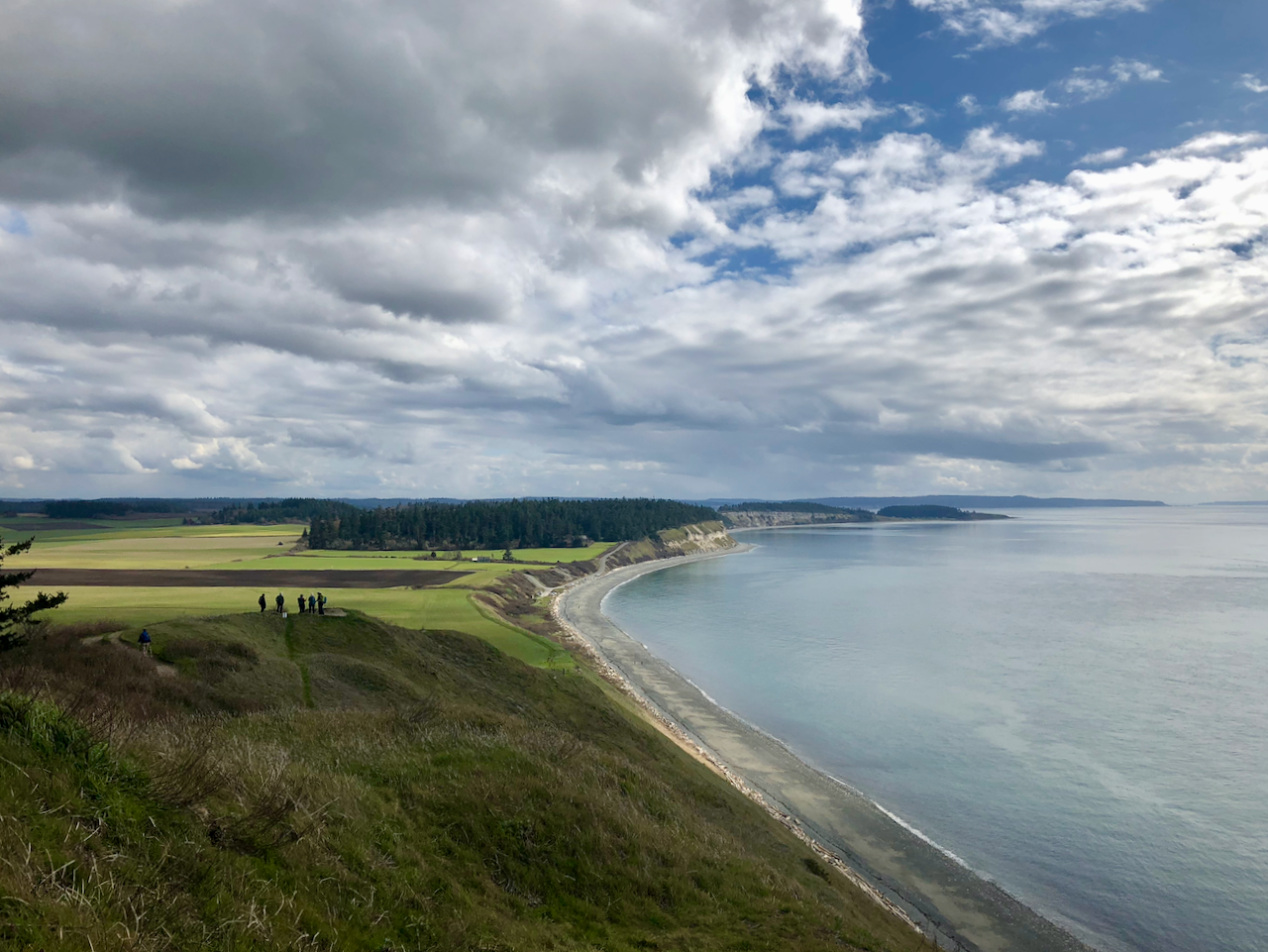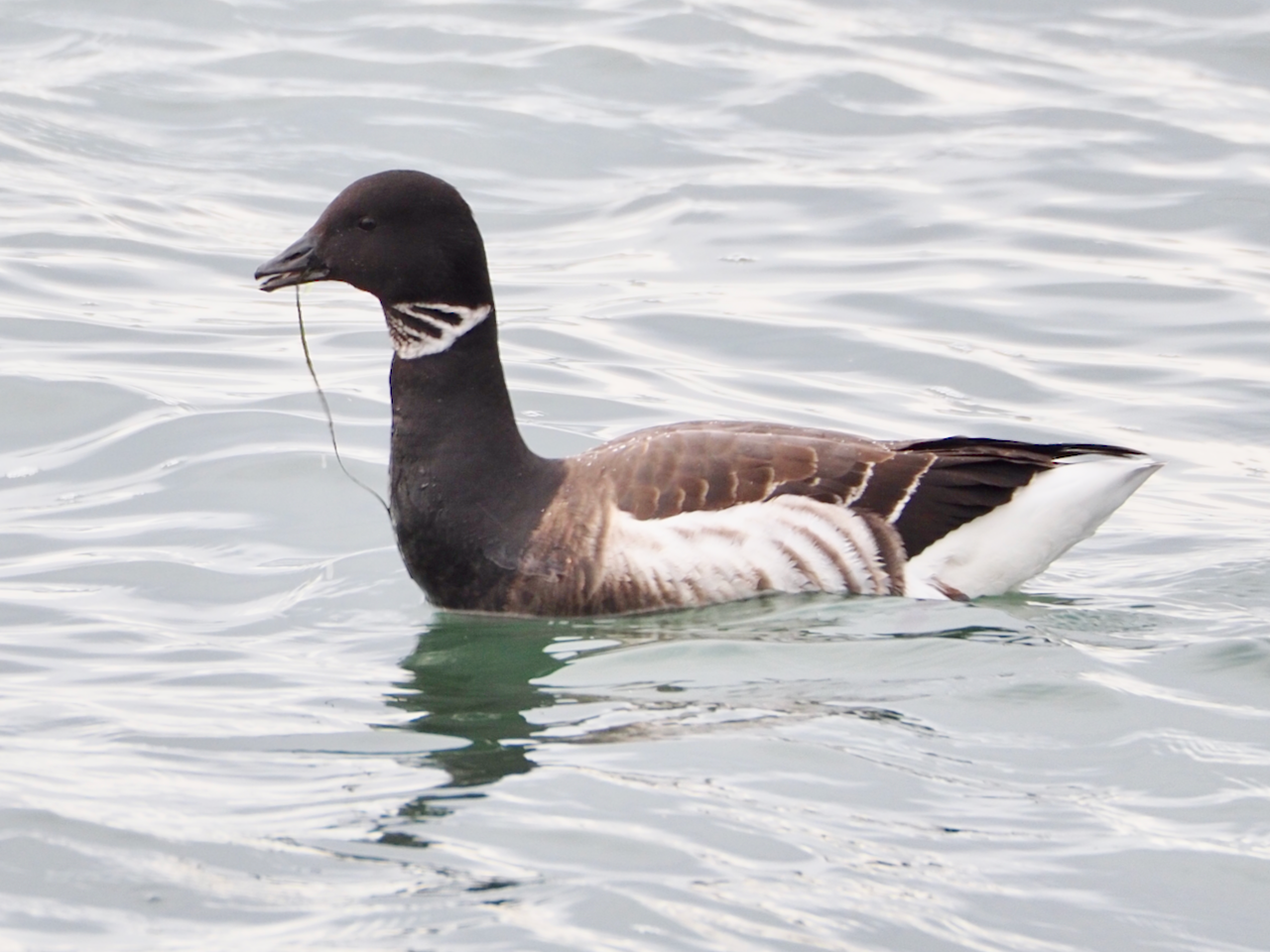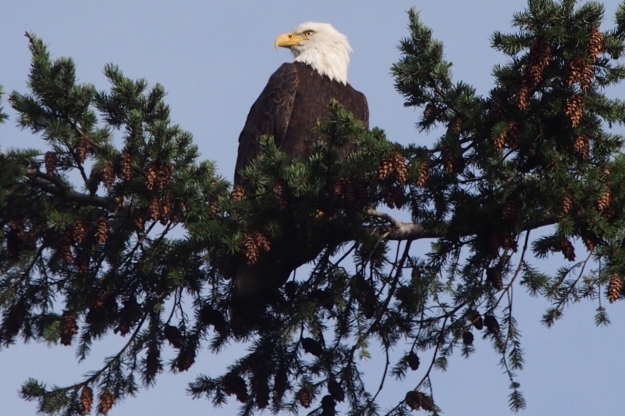November is our best ‘Blue Hole’ month on the northeast corner of the Olympic Peninsula, when oftentimes overhead is a rainshadow enclave of blue surrounded by cloud. November is also our windiest month. November rainfall elsewhere on the Peninsula is generally two to four times greater than here. How frequent the weather forecast says rain, and all we see is blue! This month averages only four or five degrees warmer than December and January, so combine a moderate wind and cooler air temp, and the windchill makes for a wintery day.

Indifferent to the storms, seabirds are in abundance and a variety fly a thousand and more miles from the Arctic and subarctic to spend the winter here. Meanwhile, bird and mammal species prepare for winter: some of our summer birds fly south; eagles concentrate at salmon spawning streams; squirrels store food in clever hiding places; other species build up fat reserves; many insects survive as dormant eggs and larvae; miniscule shrews eat a lot every single day – even every single hour – sort of like we do. Evergreen trees are still photosynthesizing but more slowly. Deer antlers scar tree trunks. Mammals leave their tracks on muddy trails.


Autumn mushrooms arise with a great diversity in size, shape, and color. Though unpredictable from year to year, there’s a mushroom plenitude sandwiched between heavy rains and killing frosts. Look for Chlorociboria aeruginosa (Turquoise Elf Cup) growing on rotting, barkless wood on the forest floor. There’s a photo in the attached newsletter.
When strong tidal currents and strong wind oppose each other, don’t plan a ferry ride to Whidbey unless you have a motel room reserved over there. But it’s a great time to watch the turmoil from the beach at the Point Wilson lighthouse. And finally, despite short days, plan outside time for the serene days (and nights) that do commonly intervene between November’s storms.








 On May 17, 2018, the Natural History Society sponsored a two-part day of birds and beaches at North Beach, first experiencing songbirds and then exploring the intertidal zone during a minus tide. All were welcome to join one part or both!
On May 17, 2018, the Natural History Society sponsored a two-part day of birds and beaches at North Beach, first experiencing songbirds and then exploring the intertidal zone during a minus tide. All were welcome to join one part or both! marine invertebrates, such as nudibranchs, crabs, anemones, and chitons.
marine invertebrates, such as nudibranchs, crabs, anemones, and chitons.